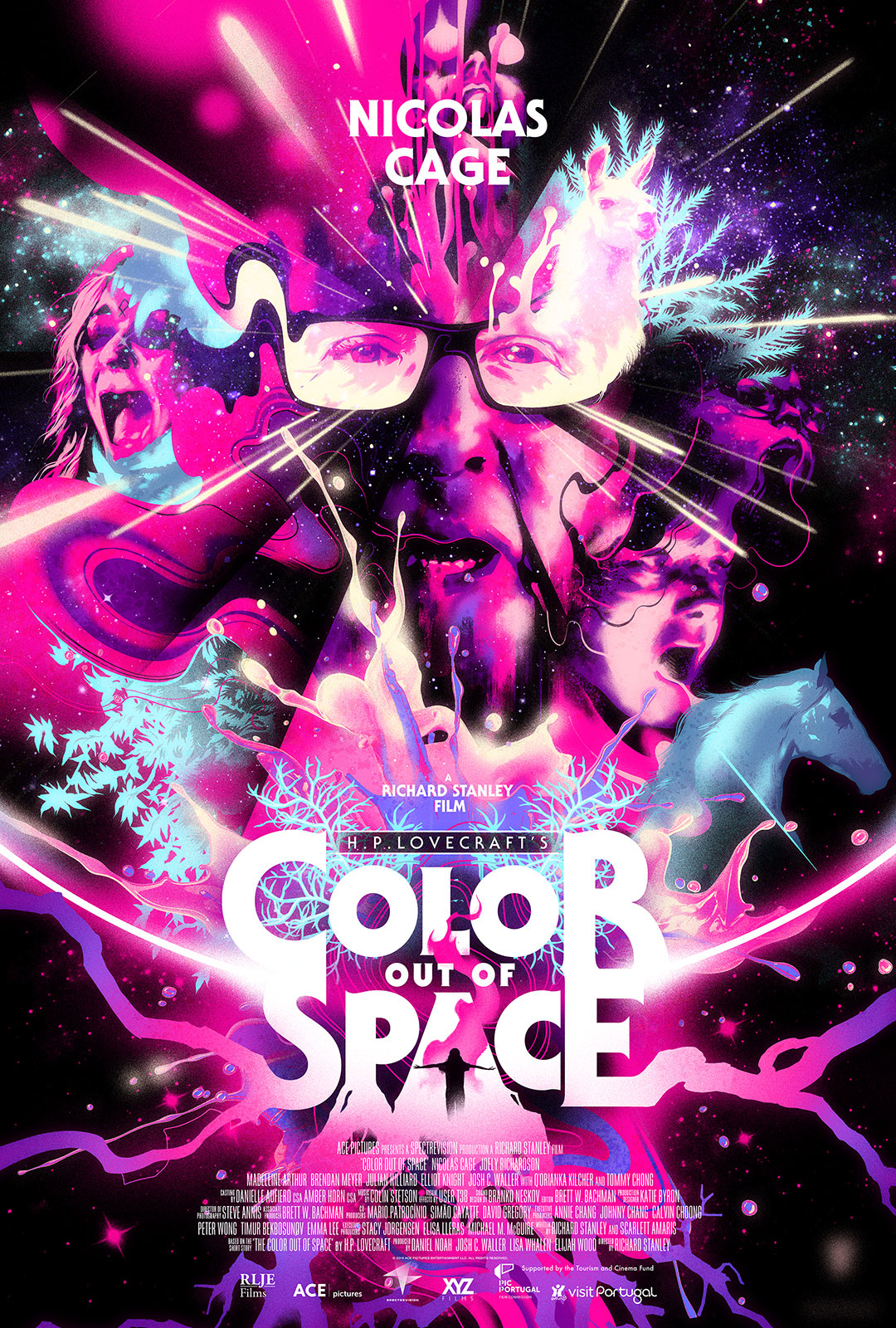Filmmaker Richard Stanley has had something of a checkered career. His first feature, Hardware, which he wrote and directed, was a success, but he was successfully sued for plagiarism, the story having too many similarities to a strip published in a Judge Dredd annual. Then, a few years later, Stanley was fired as the director of the doomed Island of Dr. Moreau adaptation less than a week into filming (firing him was never going to save that mess of a film, honestly). That was in 1995. It would be more than two decades before Stanley sat in the director’s chair for a feature film again, and it was for 2019’s Color Out of Space, an adaptation of the short story by H.P. Lovecraft. But, the trials and tribulations don’t end there.
Stanley intended this to be the first film in a Lovecraft trilogy, but his screenwriting partner and longtime girlfriend, Scarlett Amaris, filed a criminal complaint against him alleging abuse. I’ll let Amaris speak for herself:
“I filed charges for Domestic Violence, Assault & Battery against Richard Stanley, my then long term life & creative partner in October, 2014, after he beat the shit out of me in our car parked behind the Banque Postale in Lavelanet, France when we were returning from a film festival in London…It was not the first time he had beaten me. In fact, he beaten[sic] the shit out of me numerous times, but I finally pressed charges against him that time,” wrote Amaris in a blog post.
That led SpectreVision, the production company behind Color Out of Space, to cut ties with Stanley. As of this writing, Color Out of Space is the last item in Stanley’s IMDb page, with no new projects on the horizon.
So, knowing all that makes this something of a problematic watch. I would urge potential viewers to remember that film is a collaborative effort. Don’t let the awfulness of the director prevent one from enjoying the efforts of the dozens of cast and crew members who were integral in bringing Stanley’s vision to life. This film stands on its merits.
The film follows events surrounding the Gardner family. Husband and wife Nathan and Theresa (Nicolas Cage and Joely Richardson), have settled on the Gardner family farm after Theresa has a battle with cancer. Their three children, Lavinia (Madeleine Arthur),  Benny (Brendan Meyer), and Jack (Julian Hilliard) seem less than thrilled with the arrangement, as the Gardner homestead is quite isolated.
Benny (Brendan Meyer), and Jack (Julian Hilliard) seem less than thrilled with the arrangement, as the Gardner homestead is quite isolated.
One night, the sky lights up with magenta fire as a meteorite lands on the property. Over the course of the next few days, an alien infection spreads across the land. Magenta-colored plants sprout, and magenta-colored insects emerge from slimy cocoons. During the nights, strange bolts of energy, also magenta, wreak havoc. In the farmhouse, the Gardner family begins to exhibit strange behavior.
The meteorite from space is clearly spreading a biological contamination across the land, but the Gardners are too hobbled by the effects of that contamination to really do anything about it.
As the film progresses, Nathan and Theresa’s behavior becomes the most extreme, with Lavinia, acting as the audience surrogate, remaining unaffected for the most part.
Cage and Richardson did most of the heavy lifting when it came to the acting. I believe Richardson was the better of the two. Her performance remained grounded and believable, despite all the weirdness swirling about. Cage was let off the leash just a bit too much. There were scenes where he would suddenly fly off the handle at his children, and he would affect this sniveling voice that was quite a distraction. It’s possible that his character was meant to be channeling his dead father, but the hints towards this in the plot were not enough to justify what Cage chose to do, here. Moments of overacting are a risk worth taking when it comes to hiring Cage. Other than that, this is yet another fine entry on his post-stardom CV.
Another performer of note is Tommy Chong, who plays an old hippie squatting on the Gardner’s land. Chong has never been known for his dramatic performances, but he does a good job in this film. There are moments in his small part when deep gravitas is required of him, and he delivers.
Then there is the color magenta. It is literally a color out of space, just like the title. The plot calls for an otherworldly color, one that human eyes have never beheld. That is impossible to film, so Stanley and company settled on magenta to convey something alien. It works very well. The greens and browns of the rural countryside are supplanted by the magenta as the film goes on, and this shift away from what we know of nature is visually profound. Atmosphere is one thing this film never lacks.
This is also one of the more unsettling horror films I’ve seen of late. The alien contamination does terrible things to animals and people alike, setting up a final act that is horrific, sublime, and makes me glad this is just fiction. Stanley and company tied things in too neat of a bow when the film finally did end, but the journey to get there was something else.
Despite the awful accusations leveled at the director, I can’t dismiss this film. Good art has been made by bad people. And more is on the way. It’s a fact. If that poisons one’s viewing experience, that is fine. That is a valid reaction to the personal behavior of the artist. So is separating the art from the artist. This movie is worth watching.
